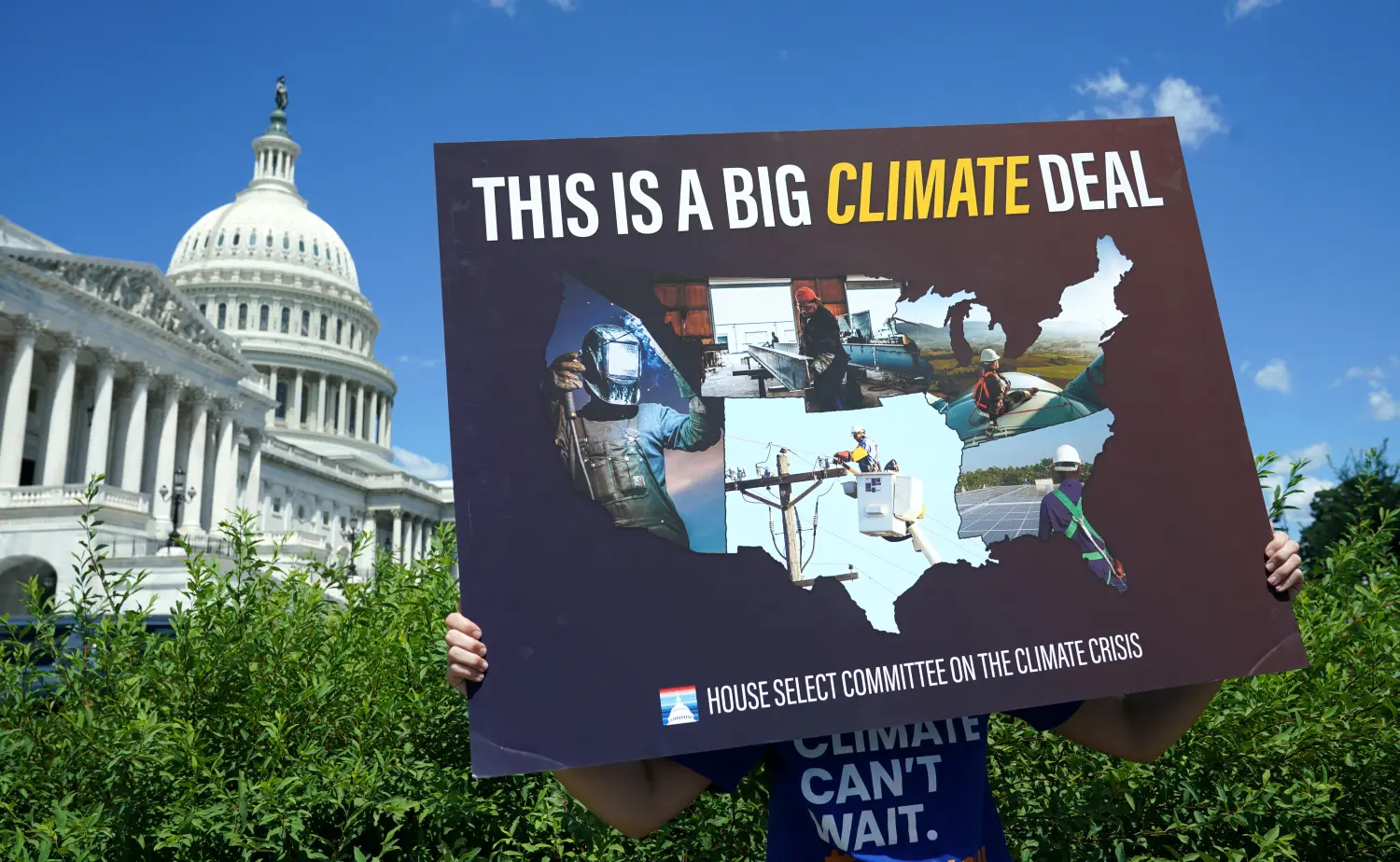The paper summarized here is part of the Spring 2023 edition of the Brookings Papers on Economic Activity (BPEA), the leading conference series and journal in economics for timely, cutting-edge research about real-world policy issues. The conference draft of this paper was presented at the Spring 2023 BPEA Conference (recordings and slides are available via the link). The final version was published in the Spring 2023 issue by Johns Hopkins University Press. Submit a proposal to present at a future BPEA conference here.
Download final paper with online appendix, discussion comments, and general discussion summary
Download data/programs for final paper
The climate provisions of the Inflation Reduction Act (IRA) signed by President Biden in August could dramatically transform the energy sector of the U.S. economy, but the costs and the extent of new investment are highly uncertain, suggests a paper discussed at the Brookings Papers on Economic Activity (BPEA) conference on March 30, 2023.
“The problem IRA confronts is massive—re-orienting the way the U.S. and global economies produce and consume energy,” write the authors—John Bistline of the Electric Power Research Institute, Neil R. Mehrotra of the Federal Reserve Bank of Minneapolis, and Catherine Wolfram of Harvard University (on leave from the University of California-Berkeley). “IRA’s incentives span the entire energy sector, from producers of raw materials to end-use consumers, and will set considerable new forces in motion.”
They estimate the cost of the legislation could be as much as around $1 trillion, considerably higher than government estimates. But, according to the authors, even expenditures that high would be cost-effective when compared with the social cost of carbon (the economic costs, or damages, of emitting one additional ton of carbon dioxide into the atmosphere).

According to their paper, Economic Implications of the Climate Provisions of the Inflation Reduction Act, most models suggest the law puts the United States on track to achieve reductions in greenhouse gas emissions from 2005 levels in the range of 32-42% by 2030, which is 6-11 percentage points lower than without the IRA. The IRA lowers the costs of adopting clean technologies and accelerates the deployment of clean electricity generation, electric vehicles, and several emerging technologies, including carbon capture and hydrogen. That would narrow the gap between current emissions and the goal set for the United States under the Paris Climate Agreement.
But, the authors note, revenue losses from the tax provisions of the IRA could be “significantly larger” than initially estimated by the Congressional Budget Office (CBO) and Joint Committee on Taxation (JCT). The agencies put the cost of the law’s climate provisions at $392 billion over 10 years: $121 billion in direct spending and $271 billion in tax credits.
The Electric Power Research Institute’s US-REGEN model suggests that the tax credits alone would cost $780 billion by 2031 (almost three times the CBO/JCT estimate). That’s because most of the credits are uncapped and their cost will depend on the extent to which households and firms use them.
“Macroeconomic conditions may have larger impacts on IRA investments than IRA investments have on macroeconomic conditions.”
The larger fiscal costs generated by the model reflect its estimates that the tax credits will be more successful than initially estimated at spurring investments by firms in clean energy production and by households in electric vehicles and energy-saving home improvements, which also lower the cost of electricity.
The paper notes that a changing macroeconomic environment, including rising interest rates, a tight labor market, and shortages of raw materials could significantly affect the success of the IRA’s climate provisions. In particular, clean energy investments—for which capital costs are relatively larger—are most sensitive to increases in interest rates.
And, conversely, the authors used the Federal Reserve Board’s model to estimate the macroeconomic effects of the law. For instance, increased energy investment could, for a time, nudge interest rates higher. However, the authors find these “quantitative effects are small.” Inflation, in the model, is modestly lower through the direct effect of lower retail prices for electricity.
“Macroeconomic conditions may have larger impacts on IRA investments than IRA investments have on macroeconomic conditions,” they write.
Citation
Bistline, John E. T., Neil R. Mehrotra, and Catherine Wolfram. 2023. “Economic Implications of the Climate Provisions of the Inflation Reduction Act.” Brookings Papers on Economic Activity. Spring. 77-157.
Furman, Jason. 2023. “Comment on ‘Economic Implications of the Climate Provisions of the Inflation Reduction Act’.” Brookings Papers on Economic Activity. Spring. 158-166.
Gillingham, Kenneth. 2023. “Comment on ‘Economic Implications of the Climate Provisions of the Inflation Reduction Act’.” Brookings Papers on Economic Activity. Spring. 167-178.
Discussants


-
Acknowledgements and disclosures
Catherine Wolfram previously served as Deputy Assistant Secretary for Climate and Energy Economics, and Neil R. Mehrotra served as Deputy Assistant Secretary for Macroeconomics at the US Treasury Department. Wolfram also serves on the board of directors of Resources for the Future. The authors did not receive financial support from any firm or person for this paper or from any firm or person with a financial or political interest in this paper. Other than the aforementioned, the authors are not currently an officer, director, or board member of any organization with a financial or political interest in this paper.
David Skidmore authored the summary language for this paper. Chris Miller assisted with data visualization.
The Brookings Institution is committed to quality, independence, and impact.
We are supported by a diverse array of funders. In line with our values and policies, each Brookings publication represents the sole views of its author(s).






